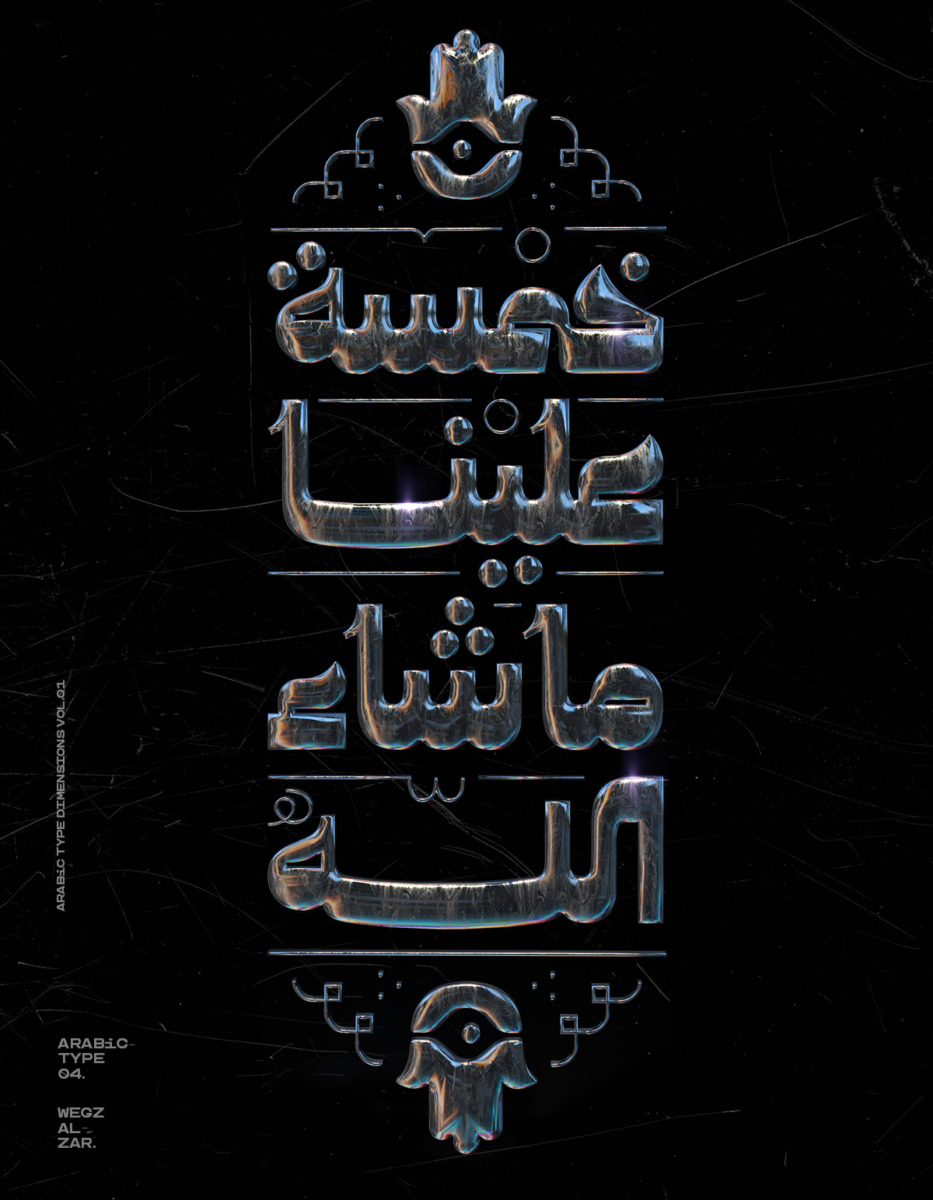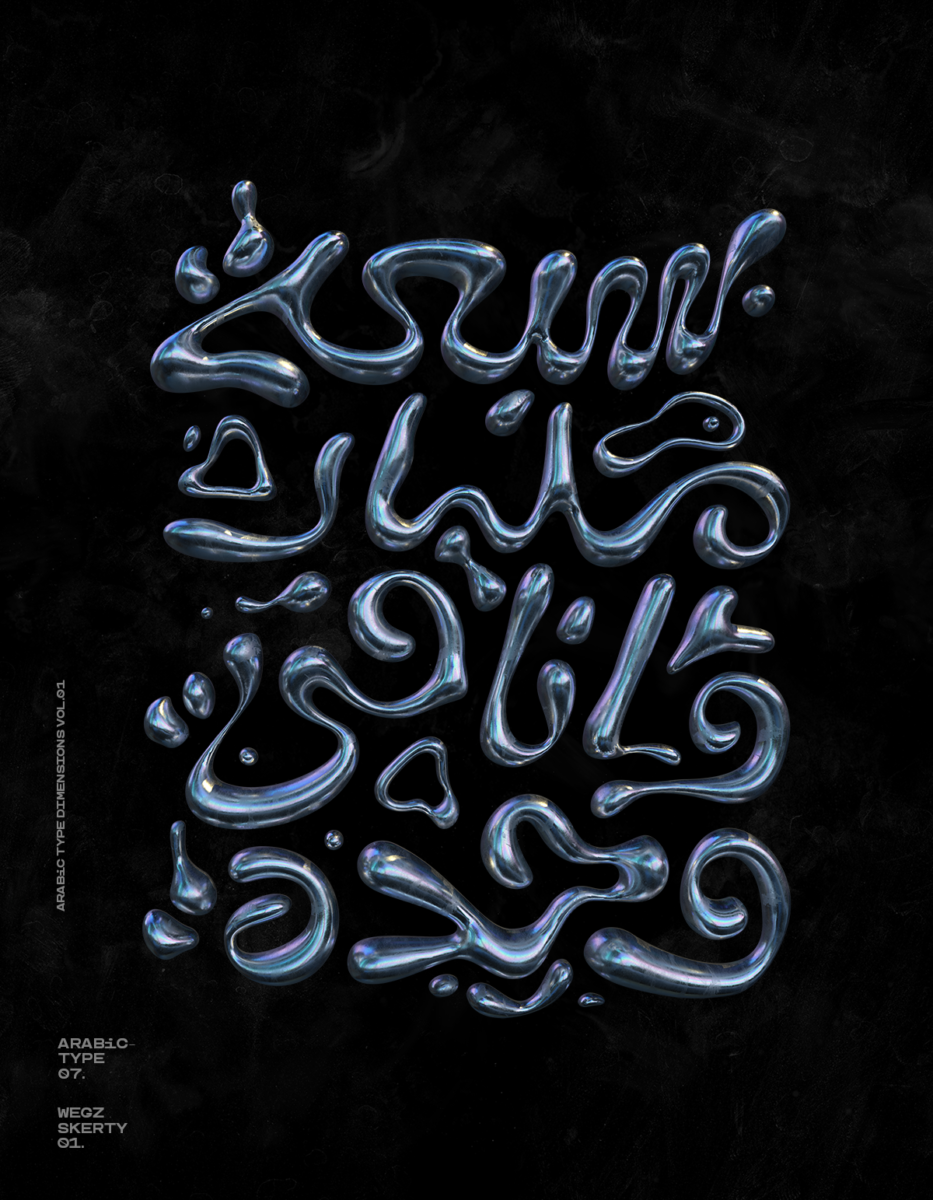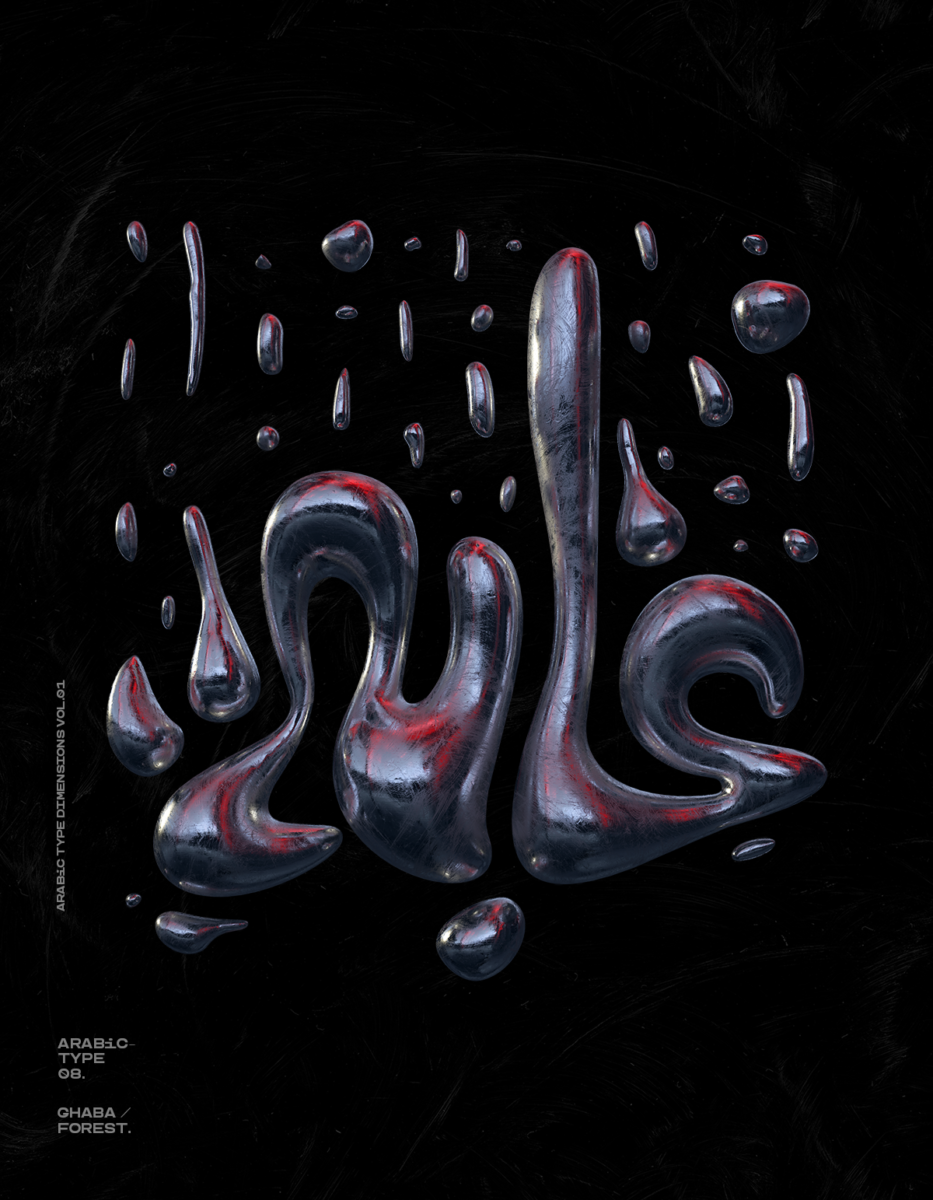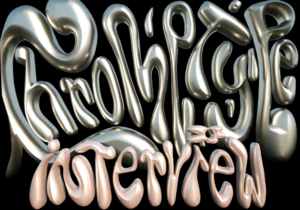Egyptian freelance Graphic Designer Ibrahim Hamdi (@ibrohamdi) has recently been creating a series Arabic 3D type infused with the sensibilities of digital art trends. Exploring the “modernism of Arabic lettering mixed with abstract 3D art,” he says he’s been using the series to play with current type trends, learn new softwares and explore the possibilities of future creative potential.

Built on over 10 years of industry experience, Ibrahim started his type foundry Protype in 2015, and has since been focusing on designing Arabic letters to meld with the modern era. Having released several modern typefaces, the designer’s recent abstract 3D type experiments are an extension of this intention – the result being an array of stunningly inspirational works, which he describes as feeding into the “next generation of contemporary Arabic type and lettering.”

Some highly structured and other far more fluid, Ibrahim’s letterings ooze with expressive textures and sculptural forms – all made possible through a combination of Cinema 4D, Blender, and Adobe Photoshop, Illustrator and Dimension. In general, Ibrahim says he finds working mainly in Adobe Dimension is easiest to get results, so he’s given us a breakdown of the steps behind these pieces.


The Process
- Starting in Illustrator, Ibrahim designs his type as vectors (sometimes freeform, without a sketch for reference) before importing it into Adobe Photoshop, where he creates his 3D type model and exports it as an Obj/DAE extension.
- Next, he sets the scene. Before importing his 3D type model into Adobe Dimension, he creates the right environment by setting his camera at the front position and importing his custom environment texture (which he creates beforehand).
- When everything’s in place, he imports his 3D type model and experiments with lighting to enhance the results.

“It’s easy to do all this in Adobe Dimension software,” says Ibrahim, “but you need to know how to use it in general – say about HDRI, the lighting, the difference between materials, etc.” To this end, he suggests creatives looking to brush up on their 3D skills should get to know easier softwares like Dimension before delving deeper into more complex ground. “You can also easily find tutorials for Dimension at Adobe.com, which run you through creating 3D scenes and type design,” he adds.

You can see more of Ibrahim’s weekly experiments over at his Instagram, where he shares posts and reels showcasing his experiments. Thanks, Ibrahim!












